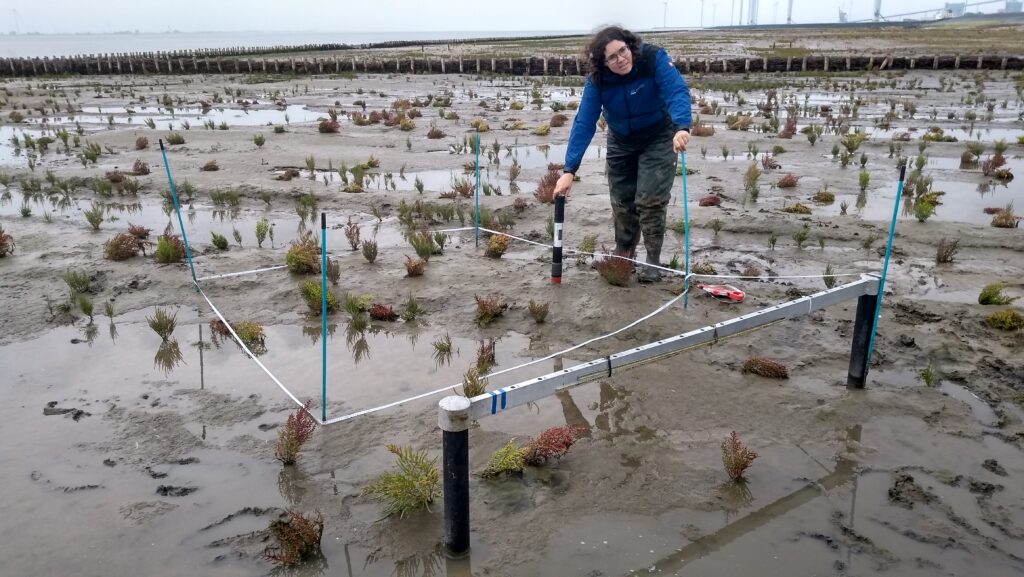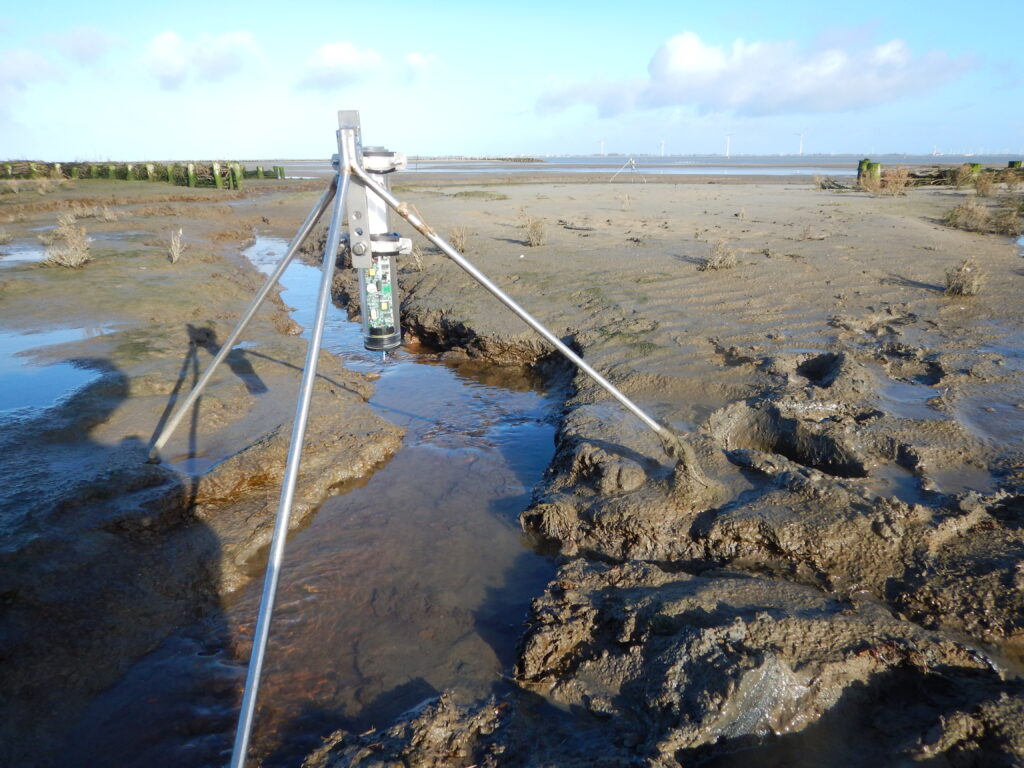Operation and maintenance
Execution of the monitoring program
Intensive monitoring of the development of morphology and biodiversity of the salt marsh started in November 2018 and continued until September 2020.
Repeated measurements (either 2 or 3 monthly, half yearly or yearly) were conducted in Permanent Quadrants (PQ’s). In each of the compartments (B, C, D, E Seeded, E not Seeded, F Seeded, F Not seeded, G Seeded and G Not seeded), three PQ’s’ were defined: one seaward, one in the middle and one landward.
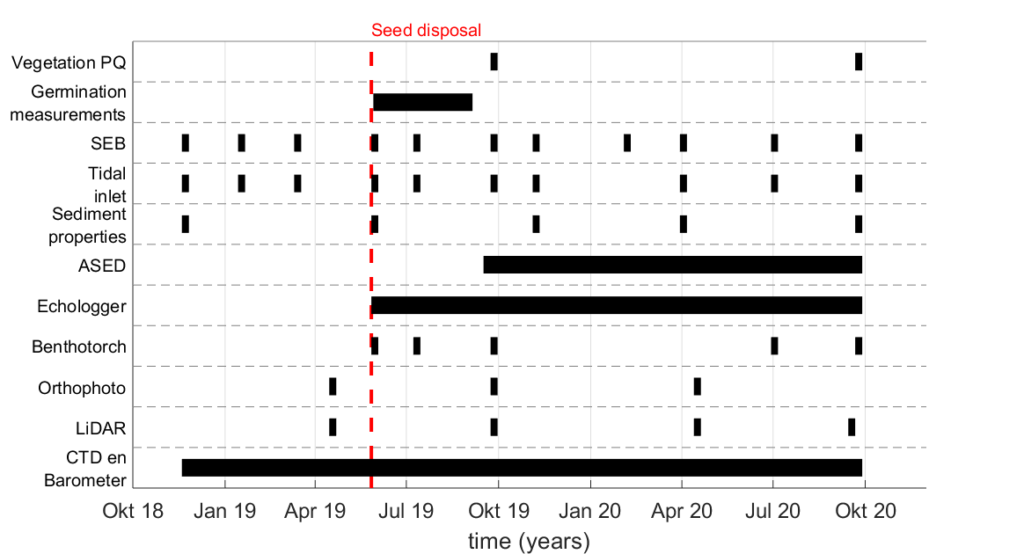
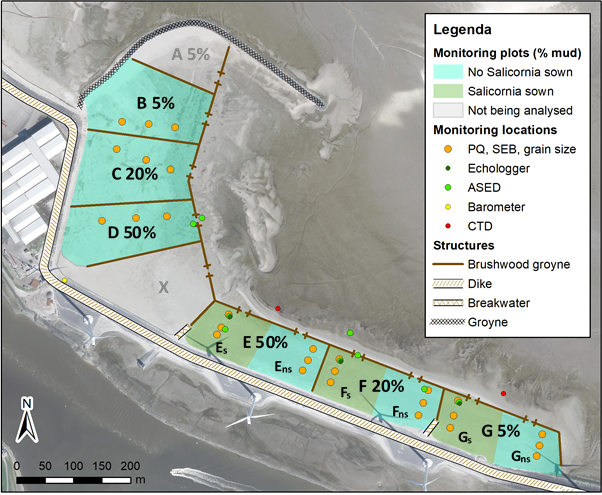
Vegetation diversity and density, presence of microphytobenthos, the sediment composition and the bed level changes were periodically observed in and near all PQ’s. RTK-DGPS measurements were performed to assess the development of the tidal creeks through the inlets in the brushwood groynes and the subsidence of the salt marsh. Continuous measurements were executed for a year or more to assess hydrodynamic exposure (water levels, inundation time and inundation frequency) and observe continuous bed level change, also at other locations than the PQ’s. Finally, LiDAR and Orthophotos were taken each half year to obtain fully covering Digital Terrain Models and vegetation cover.

Results of the monitoring can be found in De Vries et al. (2021).
Salt marsh in bloom
After two years, the salt marsh pilot project has delivered a thriving salt marsh at a location where previously the natural development of a salt marsh was not possible. In addition, our understanding of the critical factors for salt-marsh development has improved and we have learned valuable lessons for the applicability of monitoring techniques (see ‘Lessons Learned’).
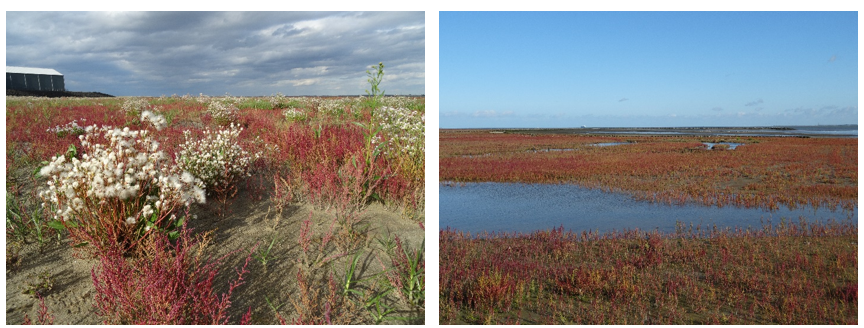
Management and maintenance
Future management and maintenance will focus on further development of the natural value of the area. The planned management and maintenance will consist of repairing damage to brushwood dams and monitoring erosion. It’s still a question whether and when interventions are needed. Preferably we let natural development take place, but erosion effects must no become too large.

